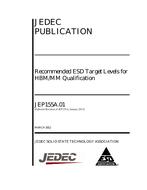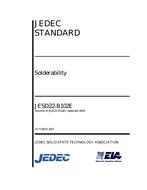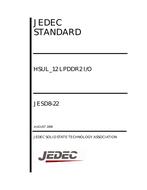Click here to purchase
This standard provides terms and definitions for ?low-halogen? electronic products that have the potentialto contain the halogens bromine (Br) and chlorine (Cl) from the use of BFRs, CFRs, and PVC, andrecommends methods for marking and labeling. This standard may be applied to all nonmetallic andnonceramic materials within electronic products including, but not limited to, materials in the followingcomponents commonly found in electronic products:
1. Transistors, integrated circuits, modules consisting mainly of integrated circuits (e.g., multichip,hybrid), and memory modules
2. Resistors, capacitors, relays, inductors, and connectors
3. Printed circuit board assemblies (PCBA?s) including components
4. Plastic in cables, sockets, switches and external wiring
5. Mechanical plastics (enclosures, fans, etc.)
6. Films, tapes, inks, and adhesives
7. Soldering flux residues (when present)
8. Sound, shock, and vibration dampeners (foams, resins, etc.)
This document establishes the maximum concentration level for the halogens bromine (Br) and chlorine(Cl) from the use of BFRs, CFRs, and PVC. While the halogen group contains fluorine, chlorine,bromine, iodine, and astatine, this document will use the term ?low-halogen? to refer only to bromine andchlorine. Refer to Annex C for further explanation for exclusion of astatine, iodine and fluorine.
NOTE The definition of ?low-halogen? is different from the term ?halogen-free? as described in IEC 61249-2sectional standard related to non-halogenated base material and as defined in the J-STD-609A marking and labelingstandard; standards that pertain only to printed boards and are currently in use in the electronics and solid-stateindustries.
BFRs, CFRs, and PVC in materials that may be used during processing, in product delivery systems, or inpackaging, but do not remain within the final product are not included in the scope of this document.
Product Details
- Published:
- 03/01/2018
- Number of Pages:
- 20
- File Size:
- 1 file , 240 KB


